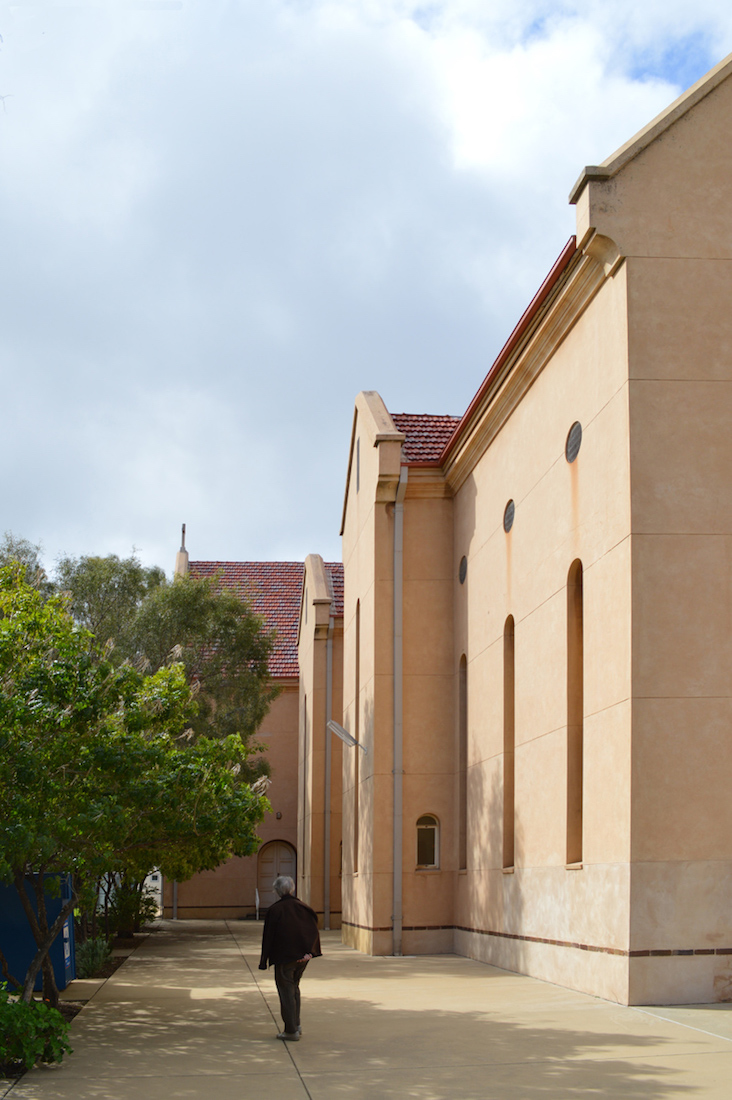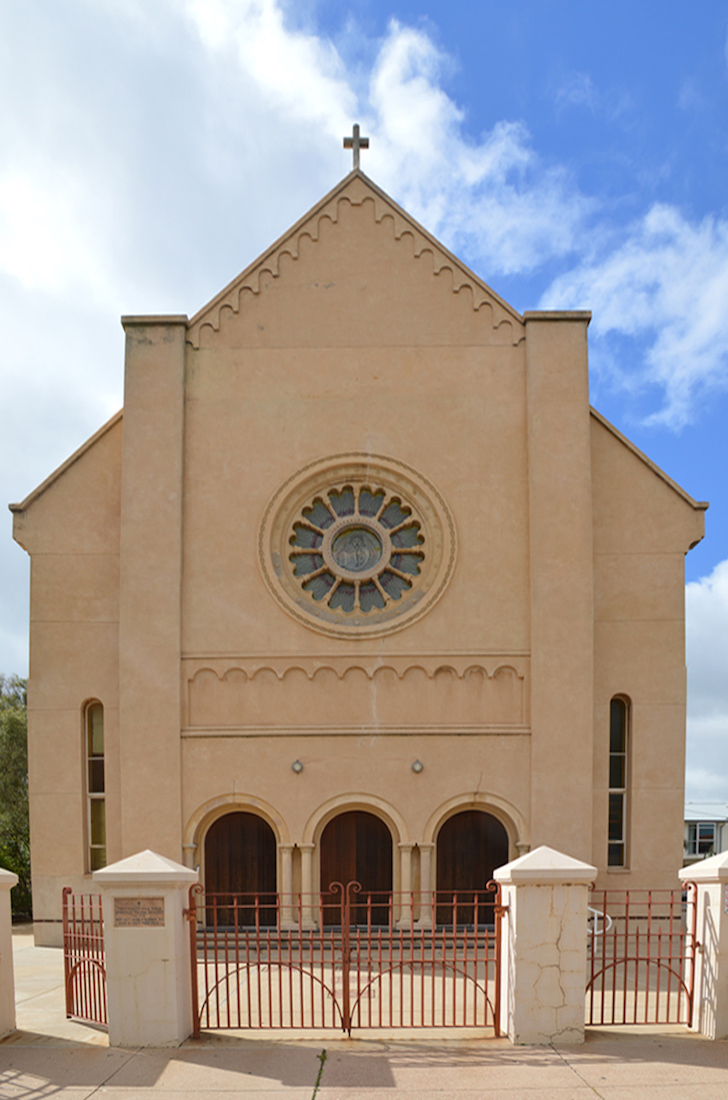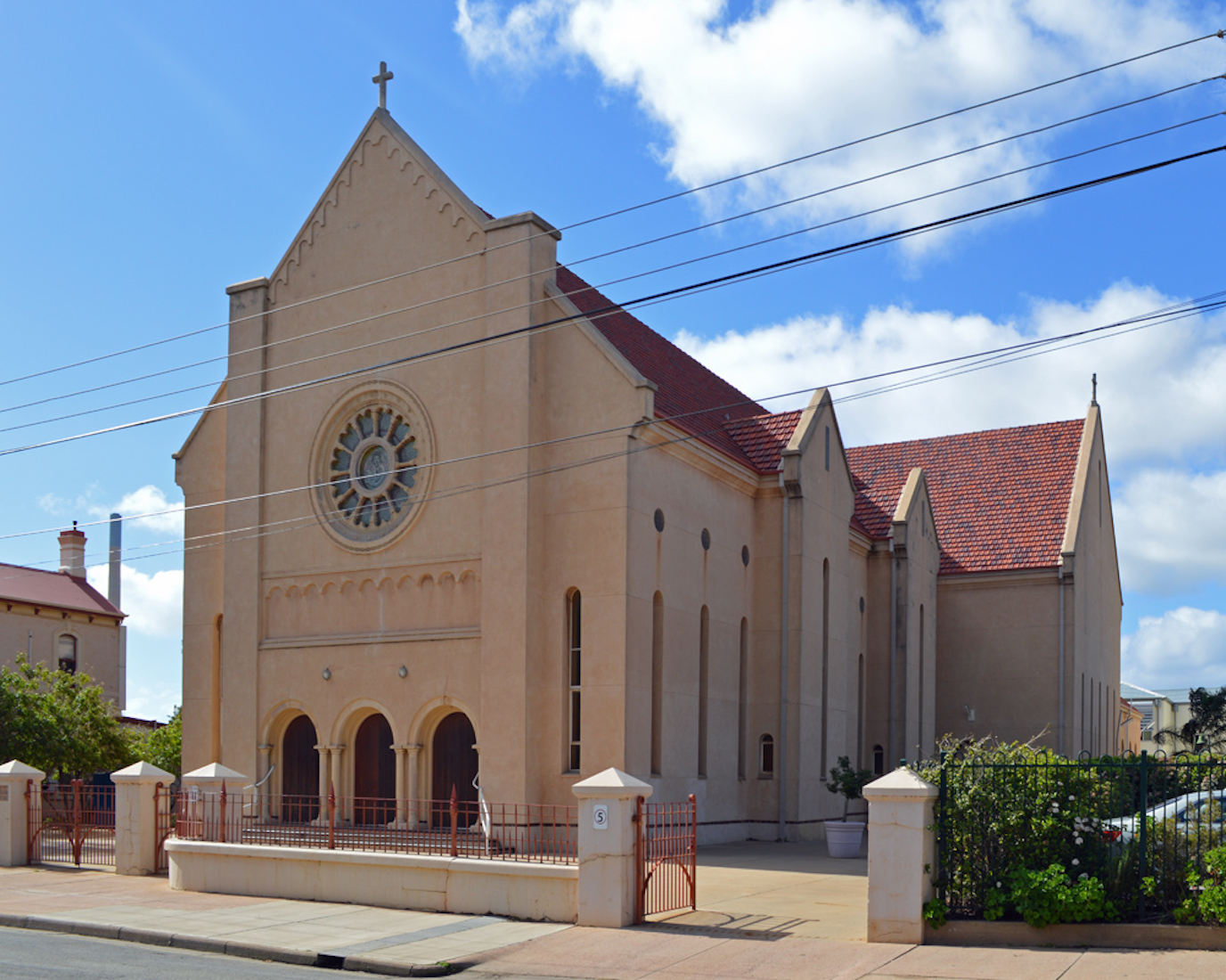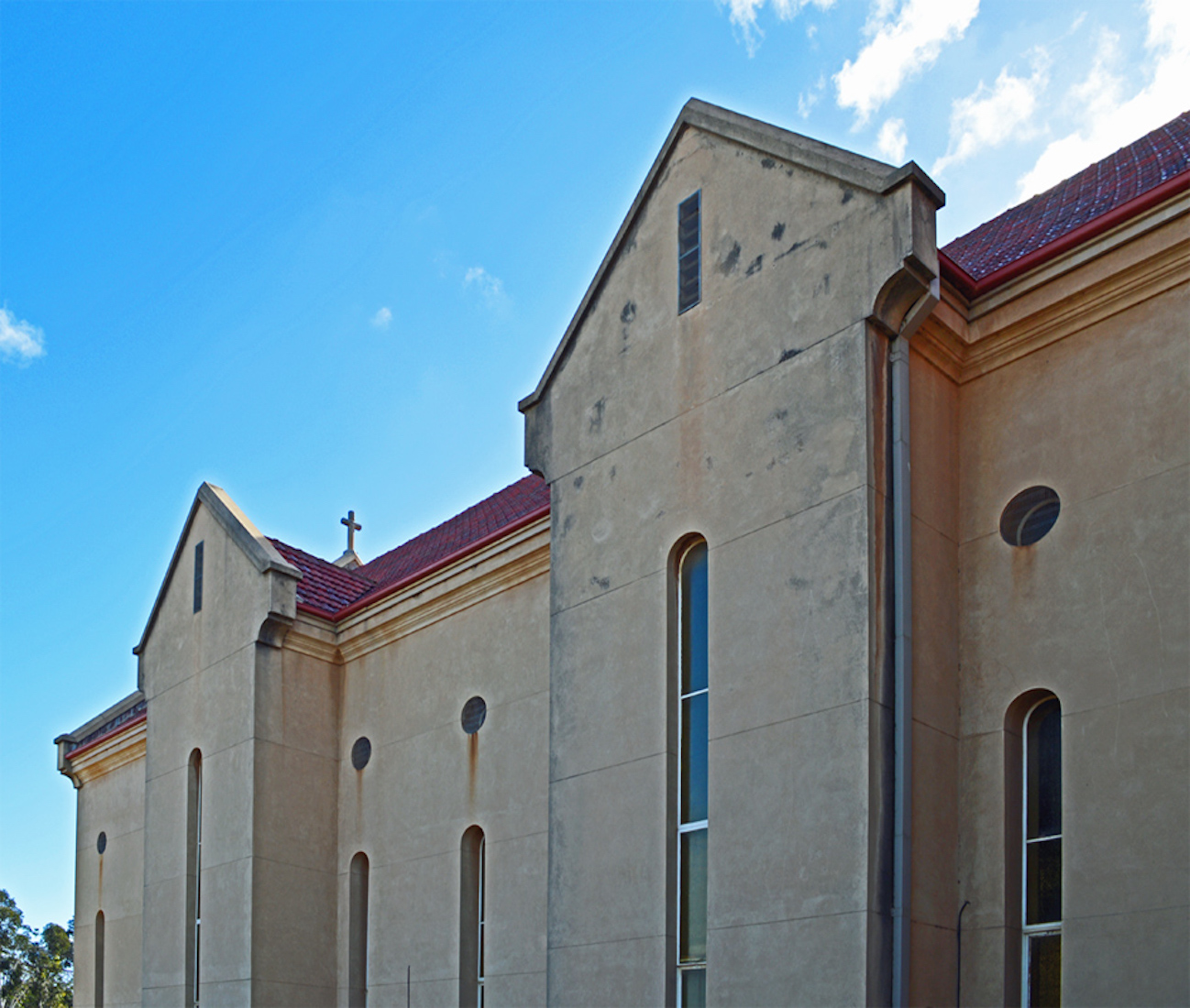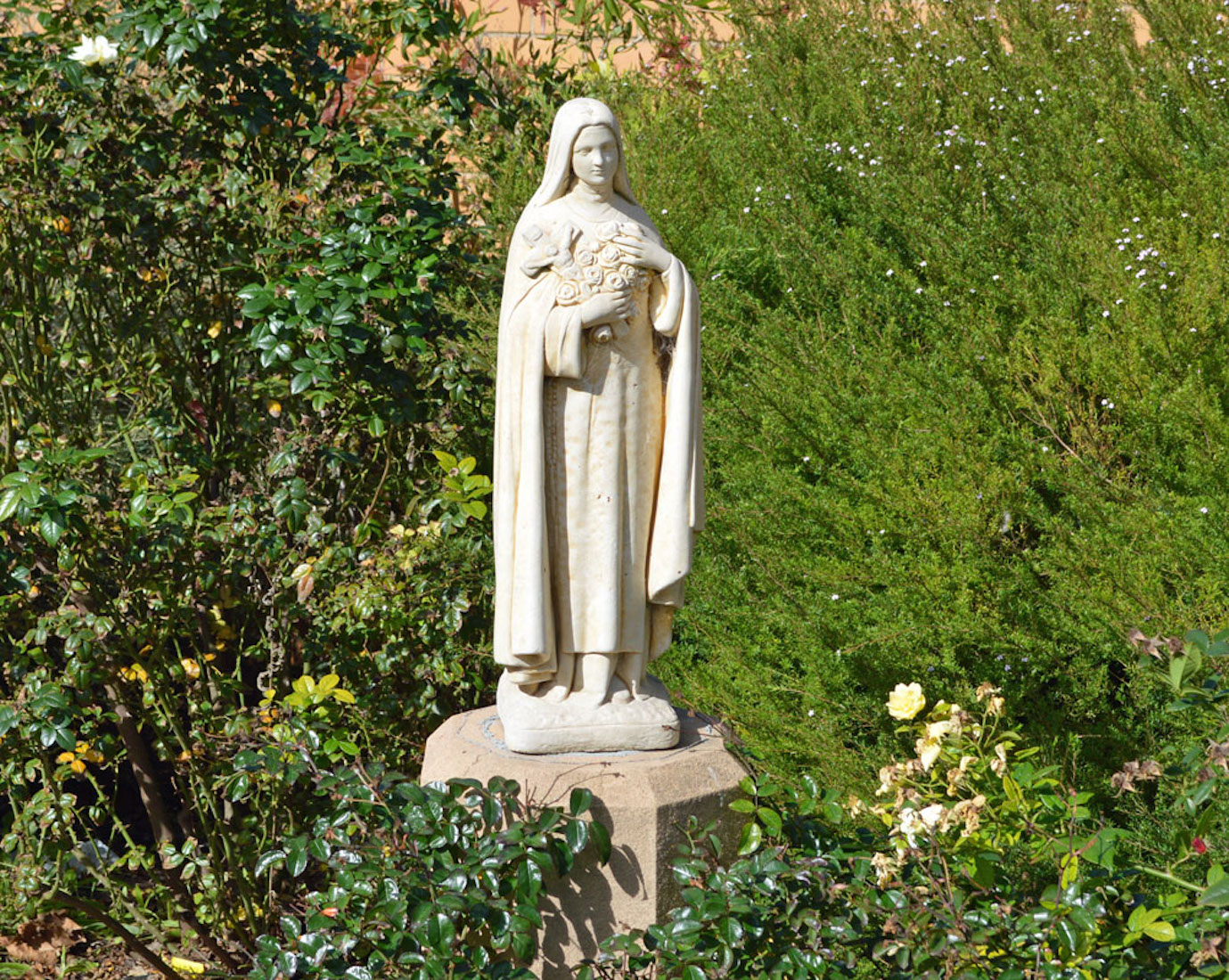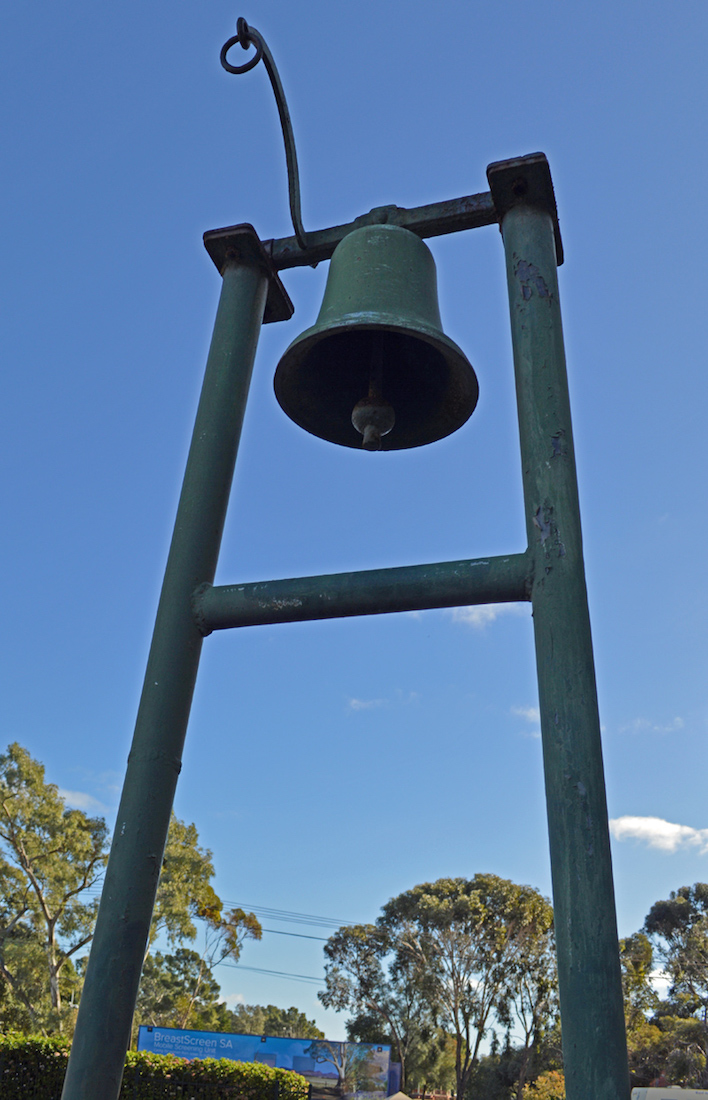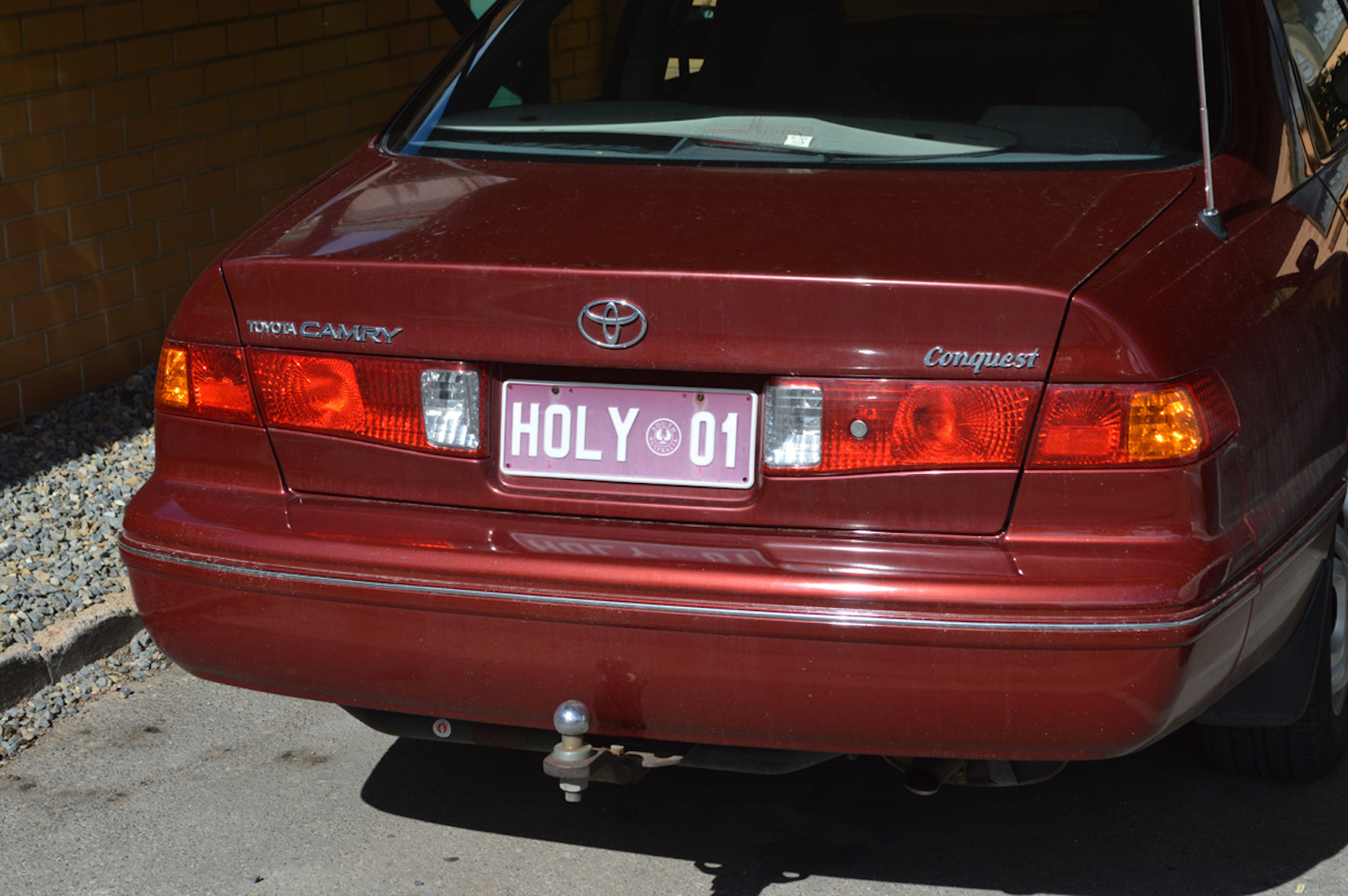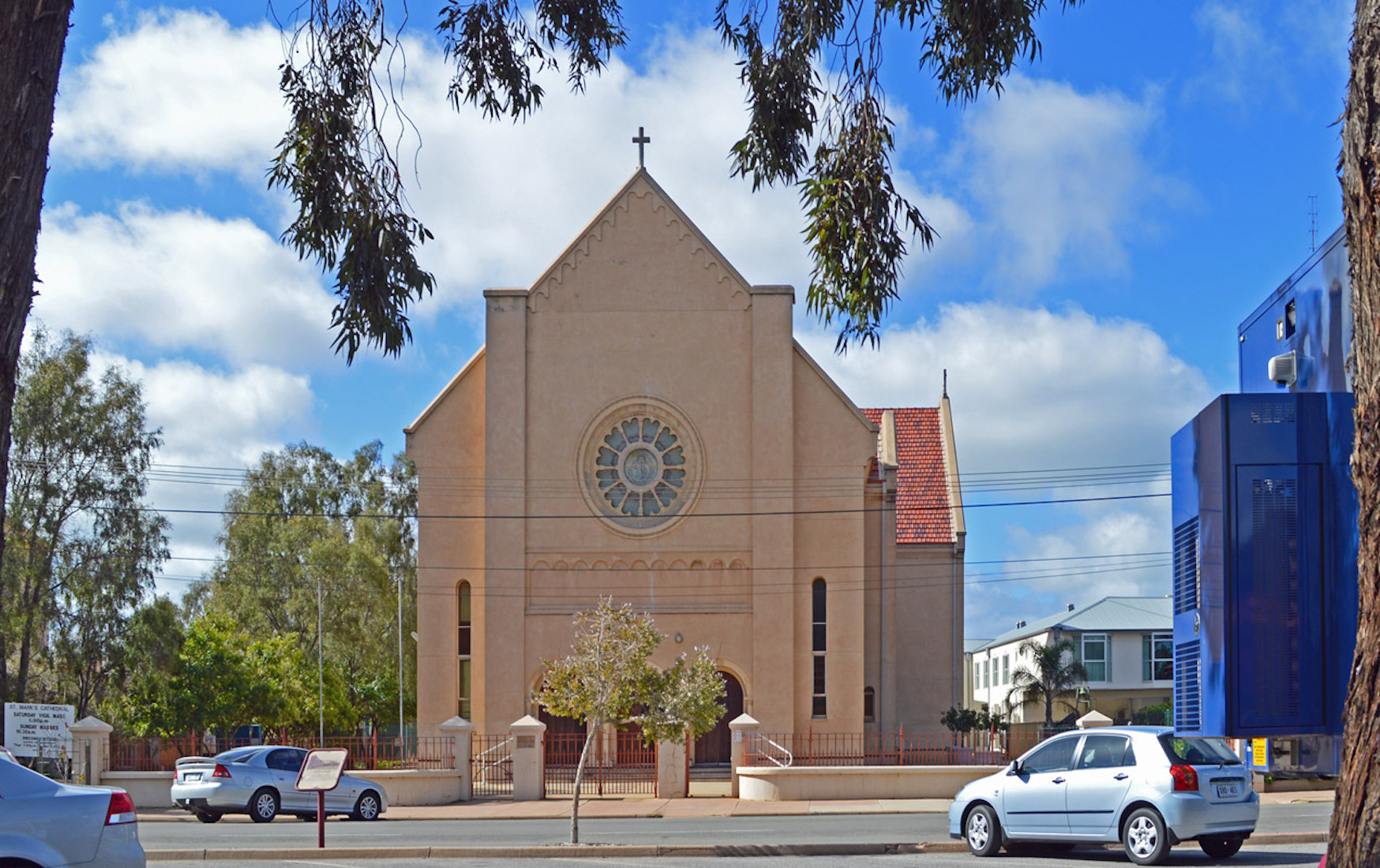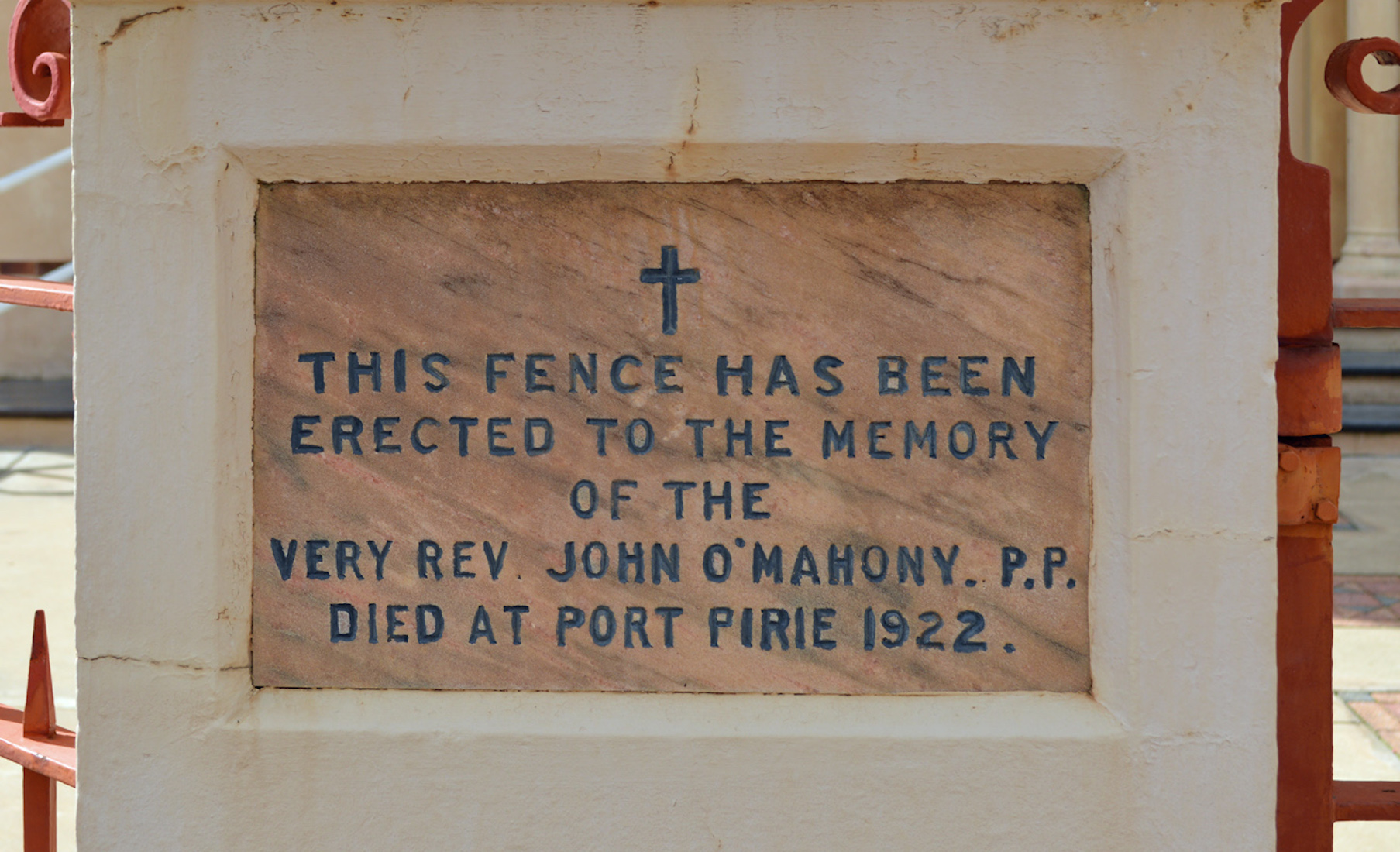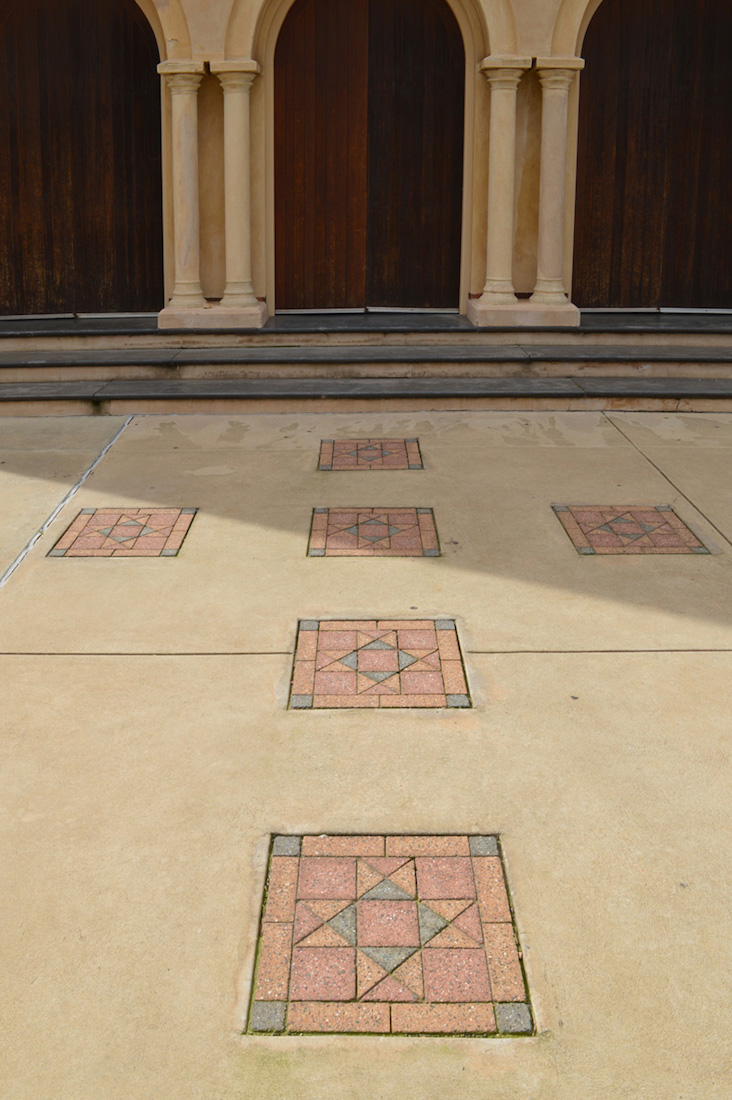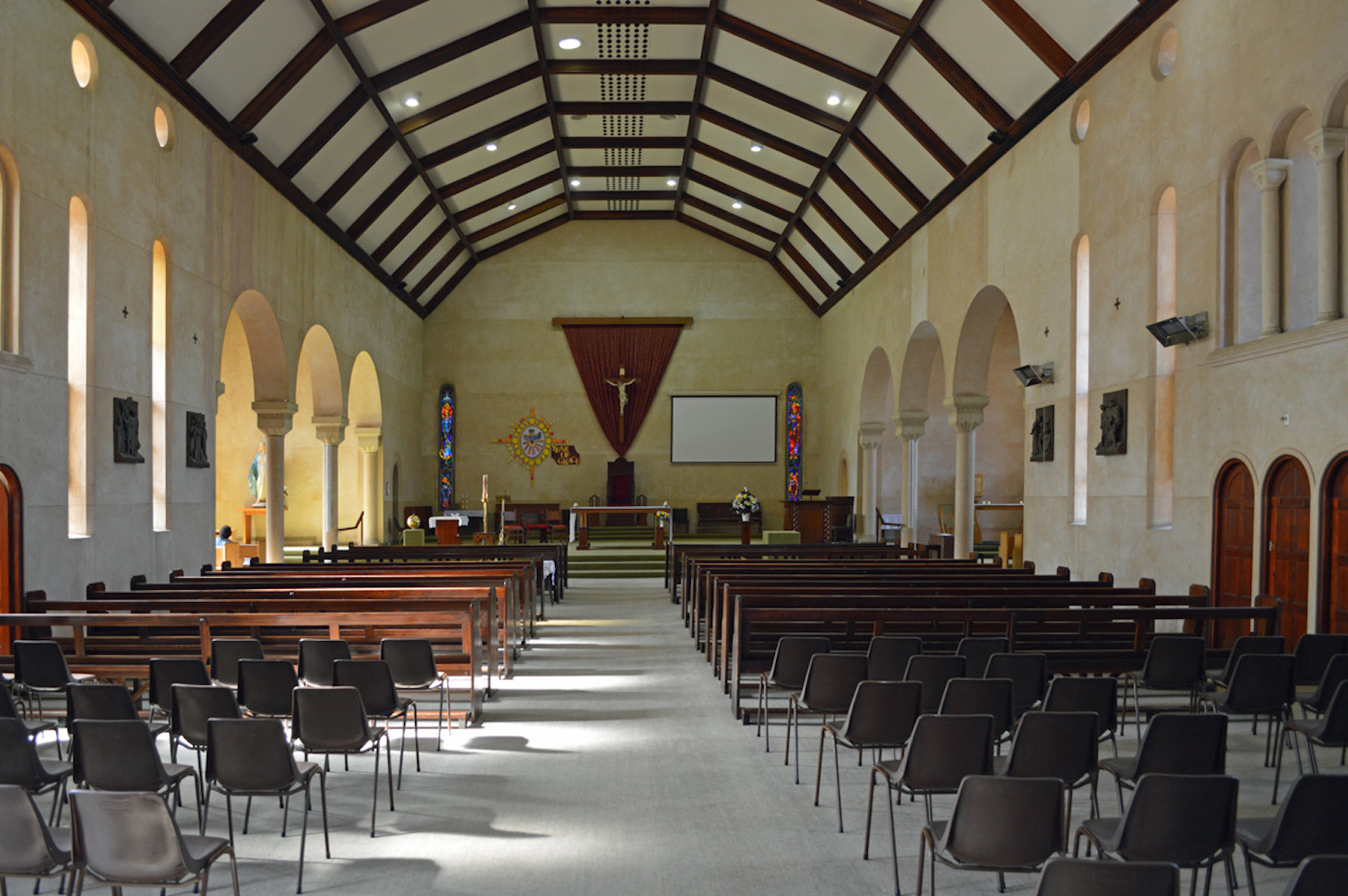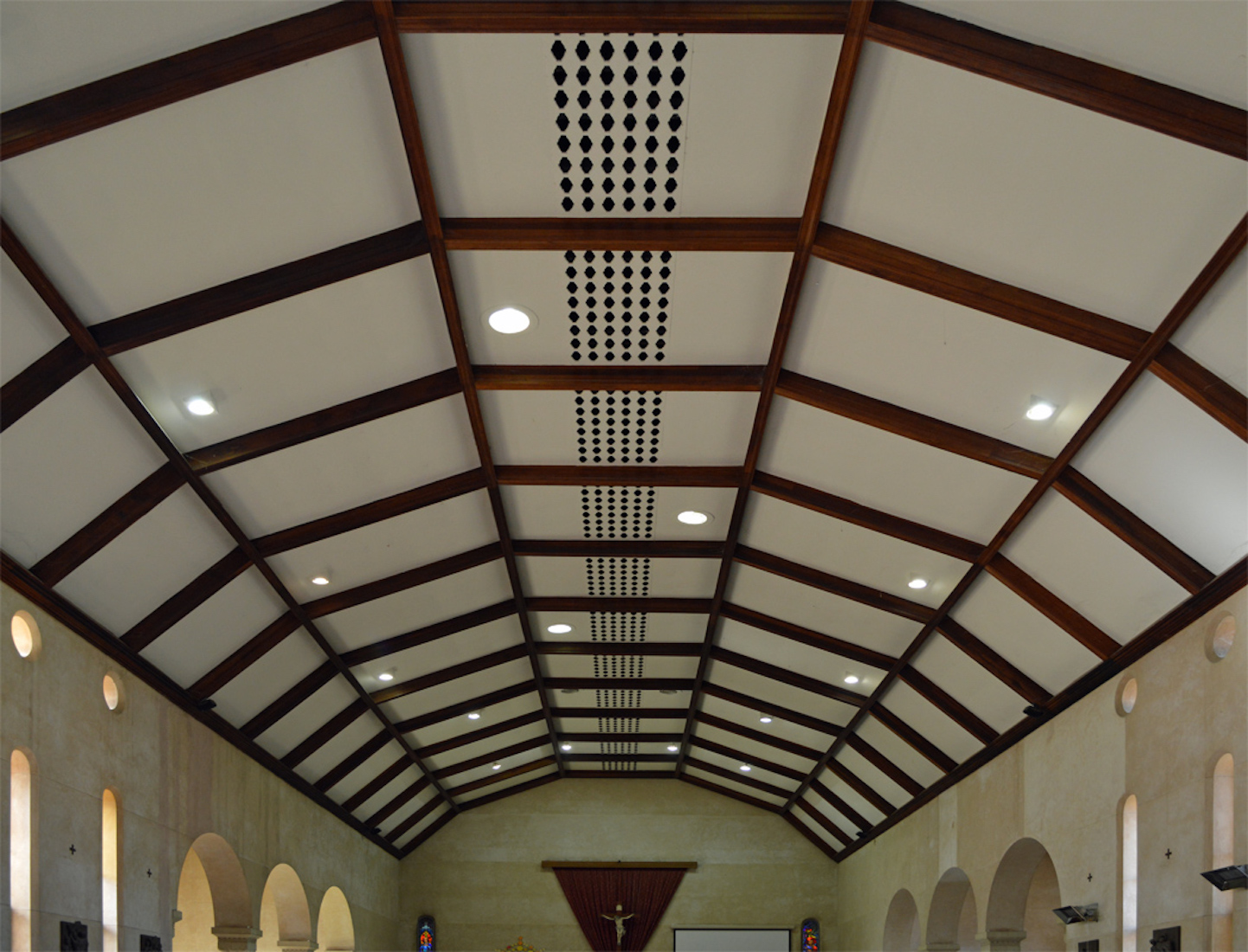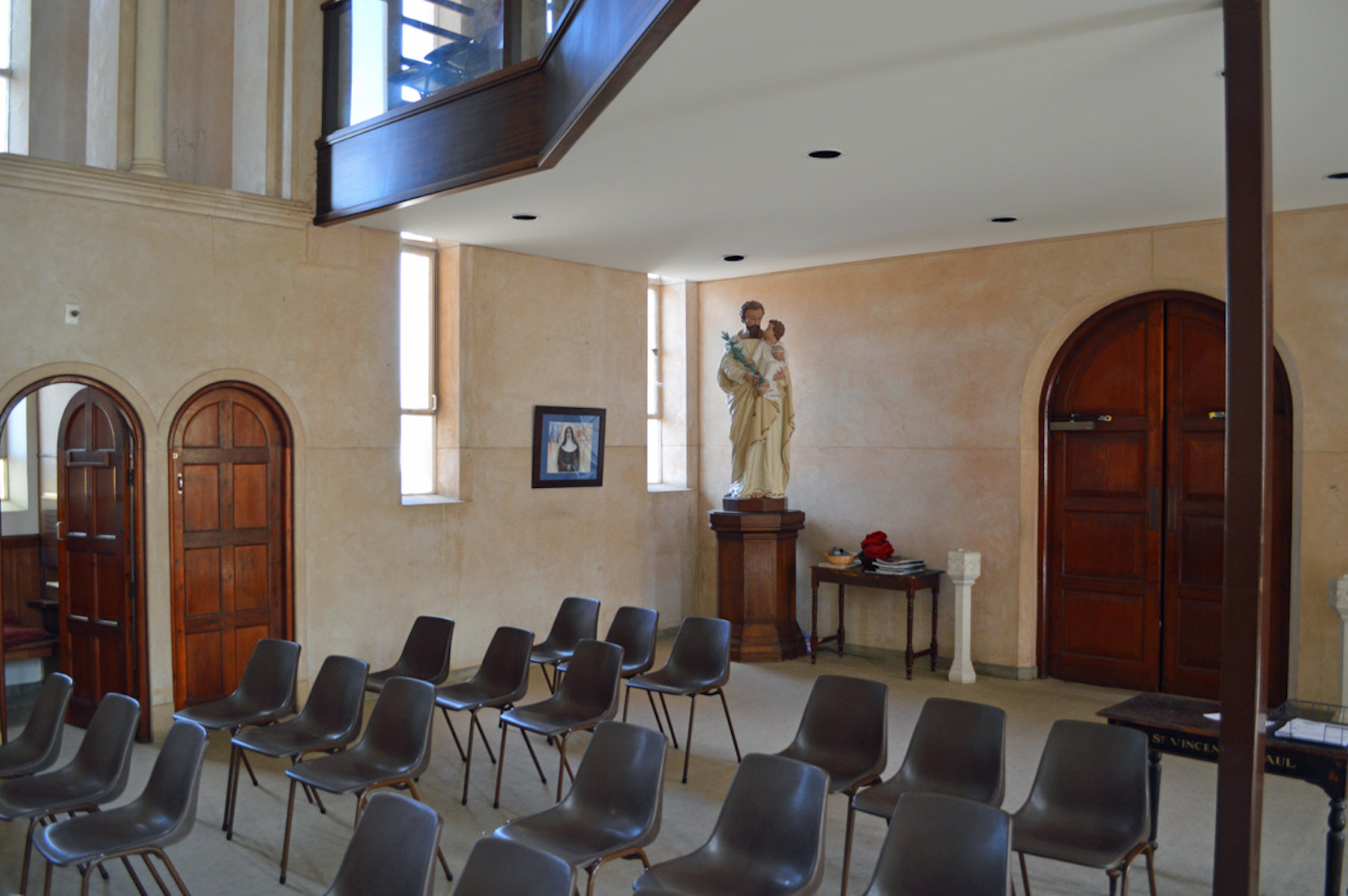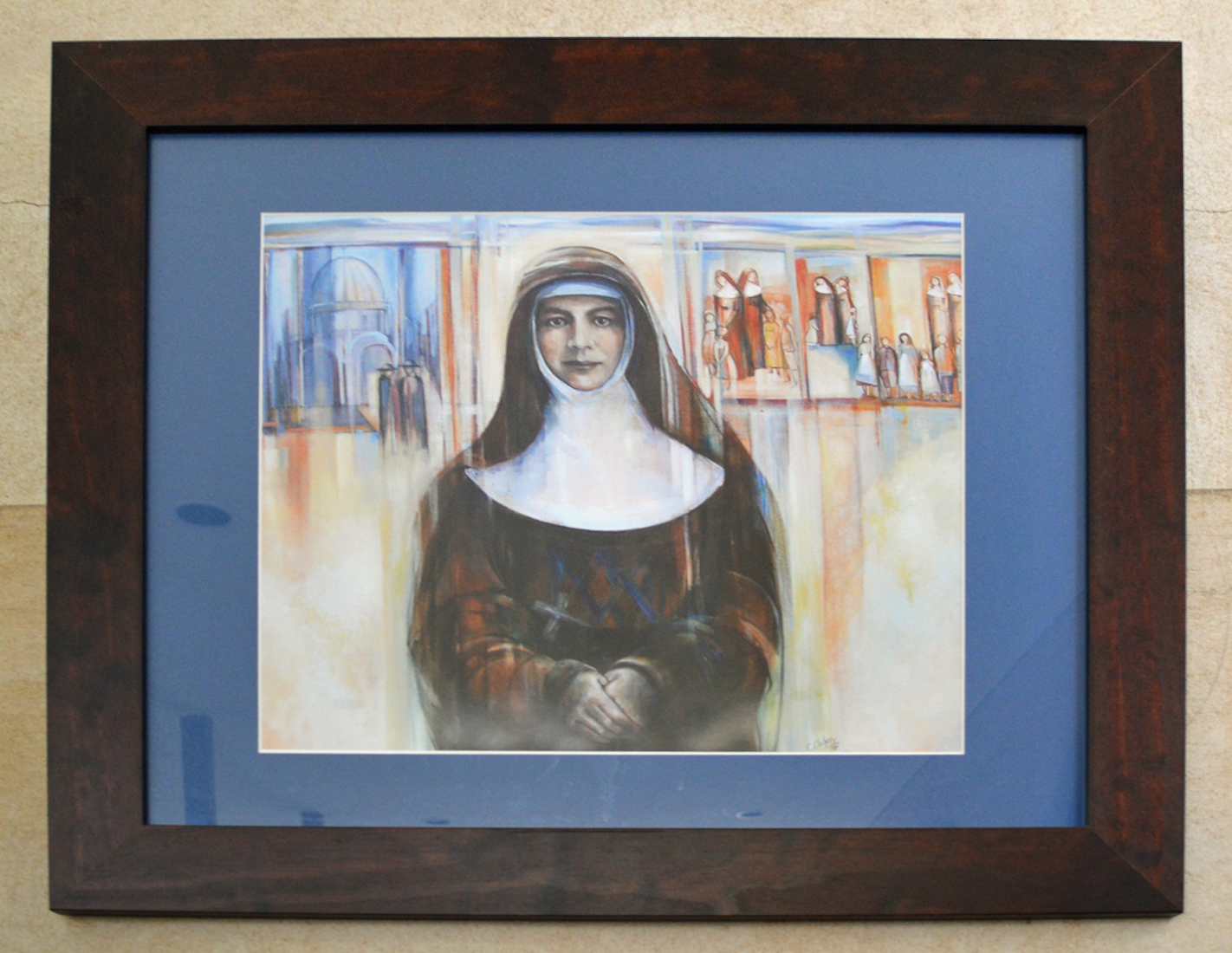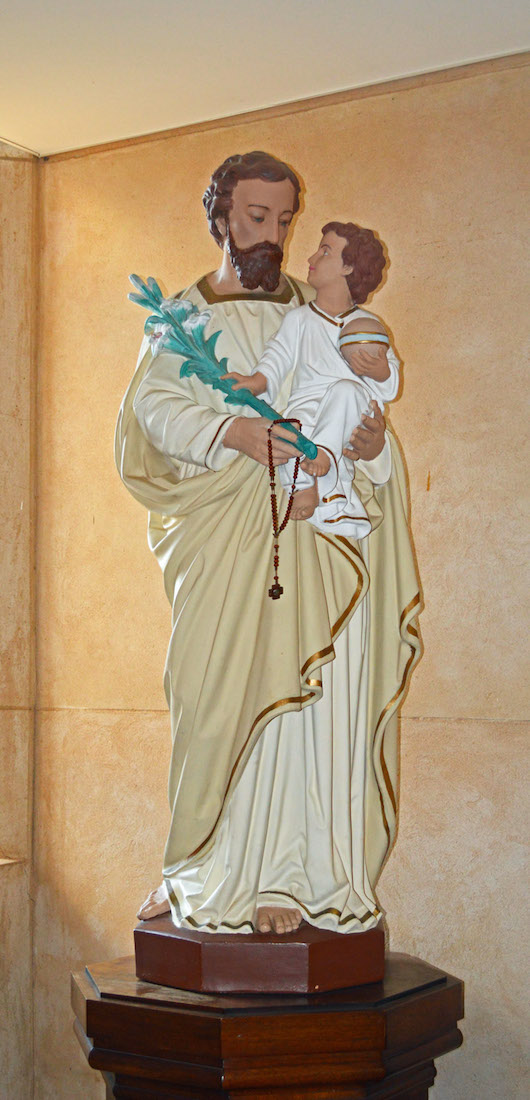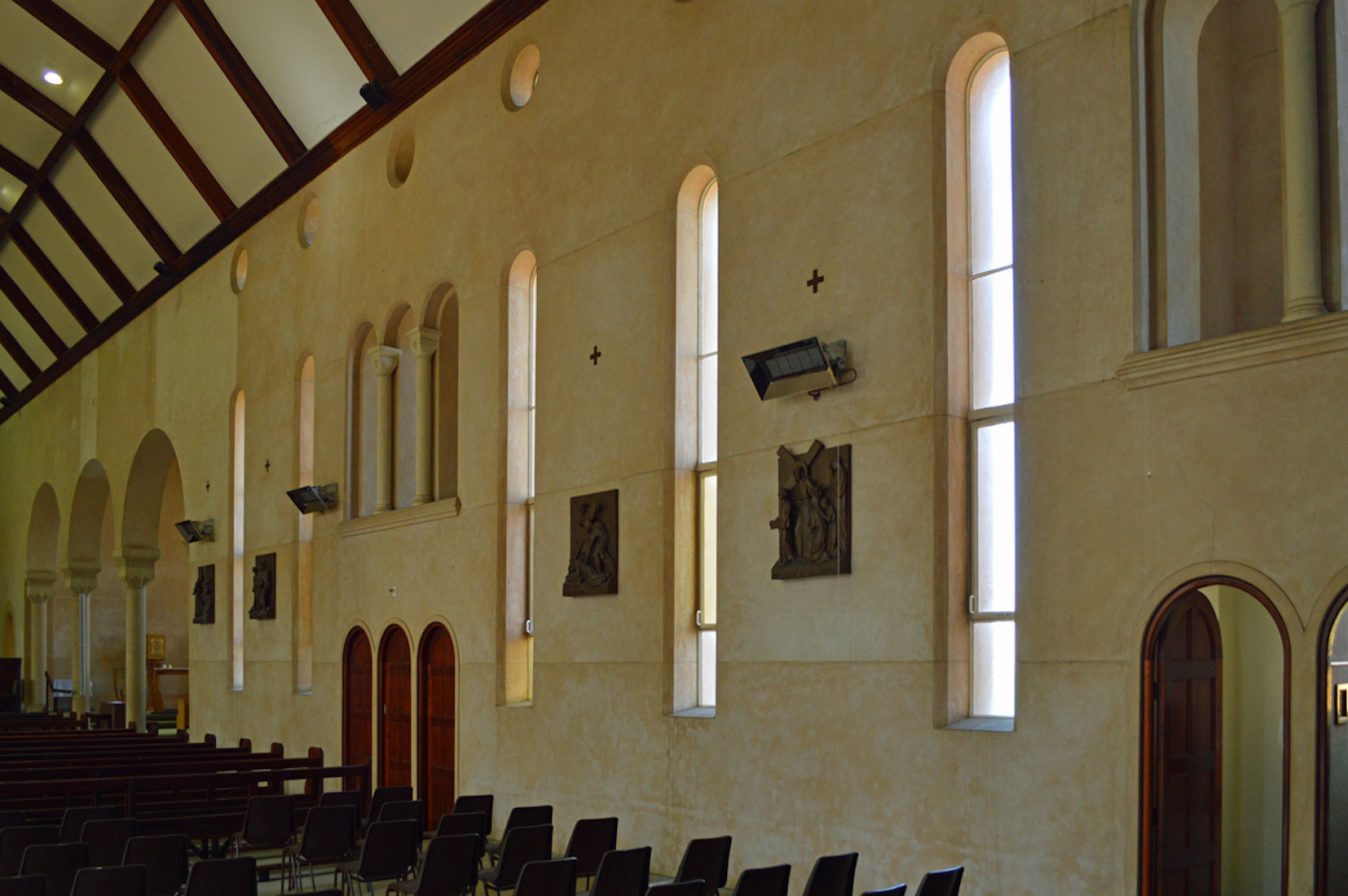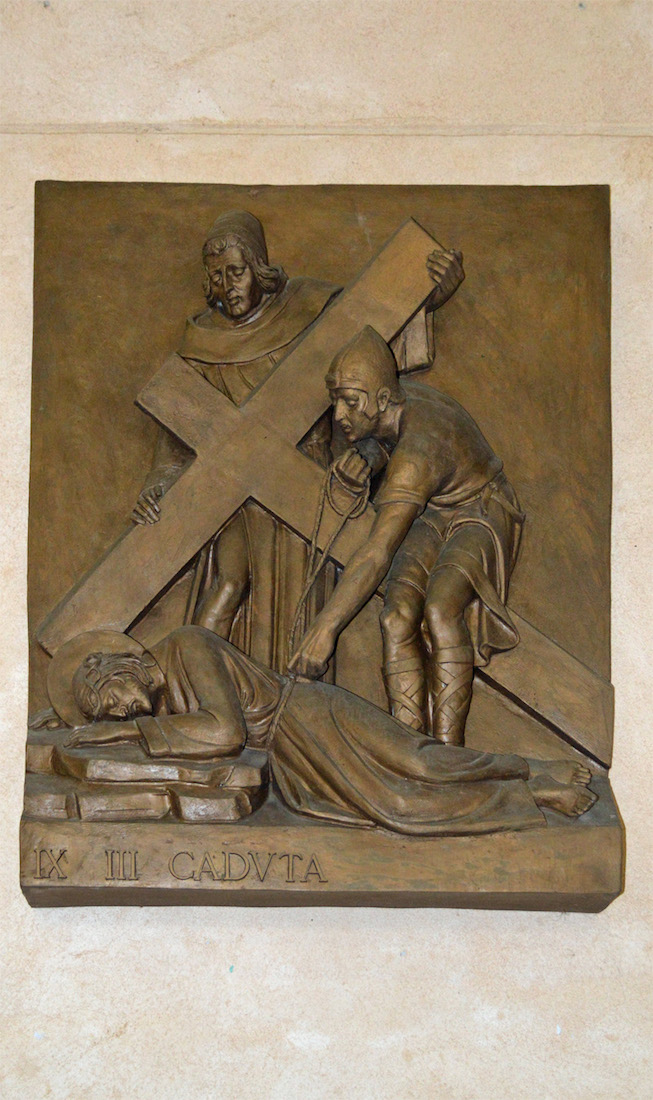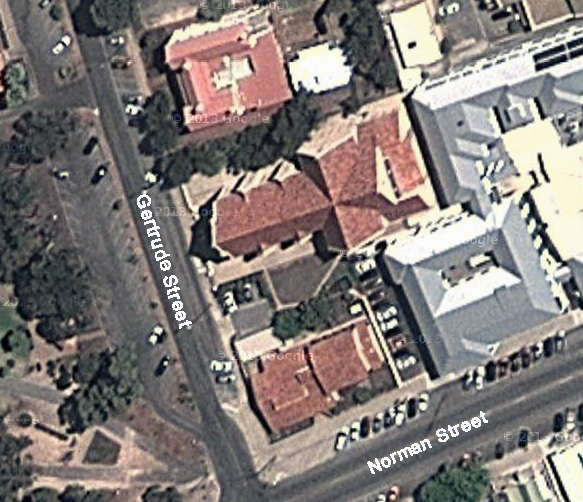
St Mark’s Cathedral sits on Gertrude Street, close to the intersection with Norman Street. We shall use our liturgical directions in describing the Cathedral; these differ from the geographical directions by only 20° – not enough to cause any confusion. The Cathedral is essentially cruciform in shape, except that the ‘top’ of the cross has been built in with sacristies, a chapter hall, a kitchen, and toilets, as we saw from the plan. PLAN
2. NORTHEAST VIEW
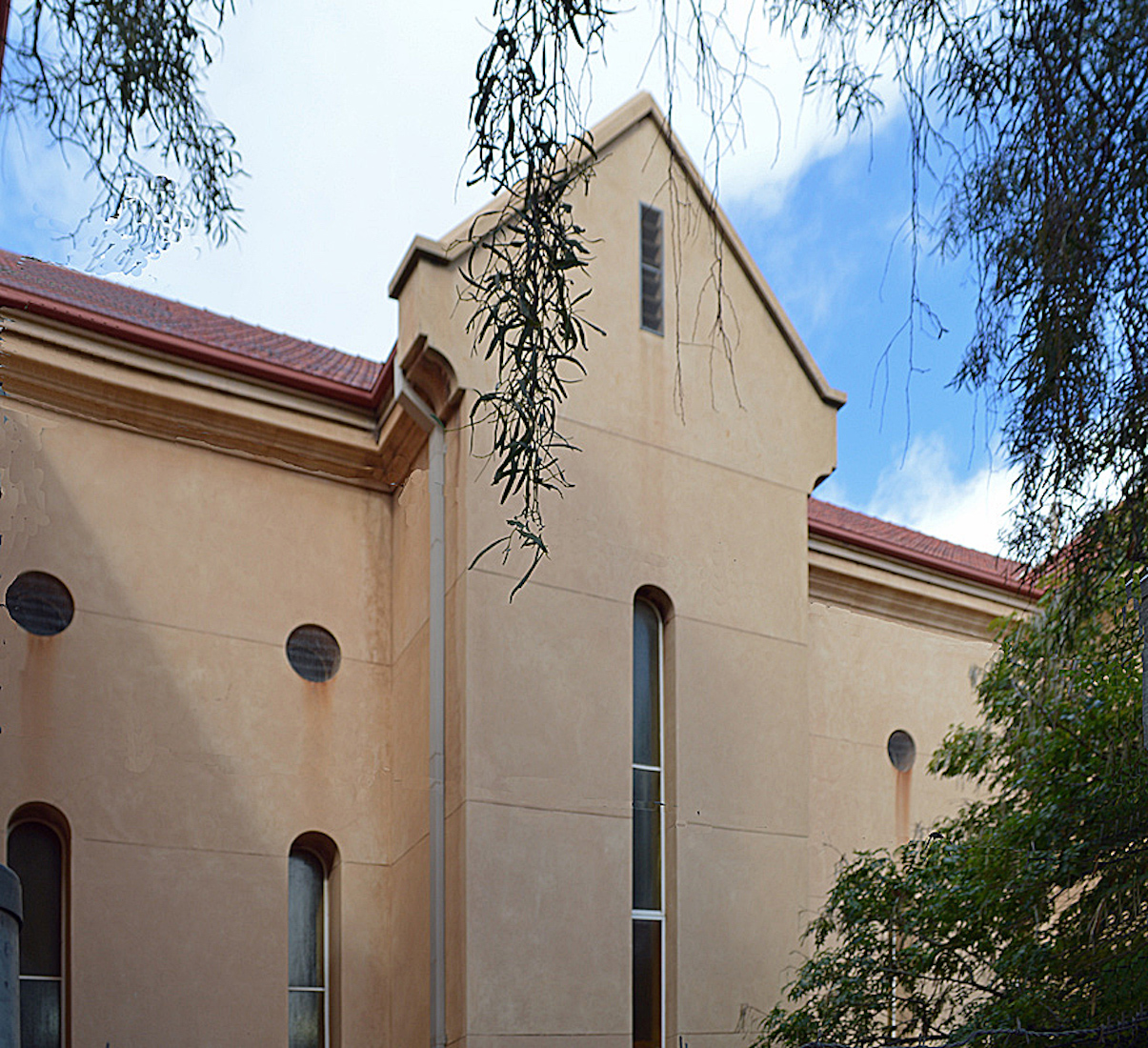
We shall begin our exploration of the Cathedral by starting at the North East. There is no public access to the back of the building, so our tour begins near the North transept. This Cathedral is modern in style with cream rendered walls. There are four rectangular protrusions along the sides of the nave. We shall find that these correspond to the confessionals – two on either side.
3. NORTH WALL
Looking back East along the North wall, we observe the tiled roof of the North transept, and the placing of the two confessionals. The nave windows are tall and narrow, rounded at the top, and have plain frosted glass. The building is impressive in its height and dimensions.
4. NORTHWEST VIEW
We have now arrived at the West wall of the Cathedral with its three rounded front doorways, and an interesting featured ‘wheel window’.
5. WEST WALL
There is simple repeated decoration below the wheel window and along the line of the gable. A simple cross adorns the top of the gable.
6. SOUTHWEST VIEW
As we move even further around to view the South wall, we become aware of the simple, yet graceful, lines of this Cathedral, and also its symmetry.
7. SOUTH WALL
The view of the South wall of the nave reveals nothing new. The grounds are more spacious on this side, allowing us to stand back to view the building. On the other hand, being the South side, it is almost always in shadow, and the wall shows some weathering as a consequence.
8. ST THÉRÈSE GARDEN
A small garden on the South side contains this statue of St Thérèse of Lisieux. She is carrying a crucifix and flowers, and a rosary hangs by her side.
9. BELL
Nearby is an old bell which obviously has a history associated with this worshipping community.
10. HOLY ONE!
There are several carports in the grounds of the Cathedral, and I was particularly struck by the number plate here. Surely this must be the chariot belonging to the Bishop, or perhaps to an even higher Authority?!
11. ST MARK’S
We return to the West wall of the Cathedral: it is time now for us to go inside.
12. GATE PLAQUE
In passing, we notice the wrought iron fence across the front of the property, and also the small plaque on the gate post just left of centre.
13. ENTRY PAVEMENT
Just before the Cathedral entrance are five attractive square mosaic pavements in the shape of a Cross.
15. NAVE CEILING
The ceiling treatment in this Cathedral is unusual. The outer sloping panels follow the line of the exterior gable, whilst the inner panels fill and cover the high apex. Probably a wise move, given the height of the walls.
16. SOUTHWEST NAVE
We begin our exploration by looking at the South West corner of the nave. One of the entry doors is at right, doors to one of the confessionals at left. In the corner stands a statue of St Joseph holding the Christ child, and a picture of Mary MacKillop is on the wall close by.
17. ST MARY MACKILLOP
Saint Mary MacKillop is one of Australia’s most remarkable and inspiring women. Dedicating her life to the Sisters of St Joseph, the first religious order to be founded by an Australian, Saint Mary MacKillop fostered an outstanding example of ways today’s society should live. Despite a vow of poverty and dependence on Divine Providence, Saint Mary managed to make education available to the poor and the marginalised people of rural Australia.
18. ST JOSEPH
The statue of St Joseph to the right of the picture is characterized by the lily branch (of an odd colour!) which he is holding. This relates to an old legend about St Joseph.
19. SOUTH NAVE
We now look down along the South wall of the nave. We observe the doors to the two confessionals with their decorative colonnades above, and at left, arches leading through to the South transept. Interesting Stations of the Cross line the walls.
20. STATION IX
Pictured is Station IX with Jesus falling for the third time. The Stations of the Cross are used as an aid to devotion, particularly in the Easter season. They depict the events occurring as Jesus is led away to the cross. These three-dimensional images have been very skilfully executed, and it is interesting the way that some of them extend ‘beyond the square’.


